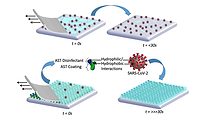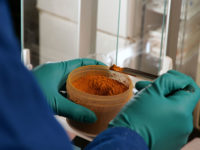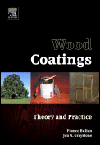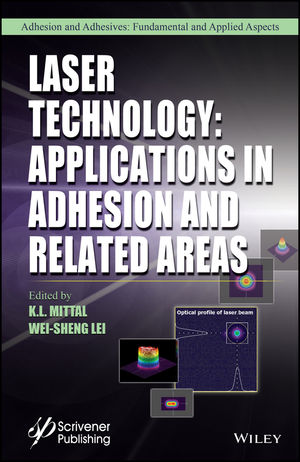Can you recollect the number of times you furiously wiped surfaces with disinfectants over the past year? The COVID-19 fear factor has demanded scientists research products that are based around nanotechnology. They have been looking for several options that aim at surface coatings that tend to bond with materials and provide them with long-term protection against viruses, bacteria and fungi.
Why Do You Need An Antiviral Coating?
Hygienic or antimicrobial coatings have been around for the past several years. Apart from using preservatives just for in-can preservation, these coatings offer active protection against several microorganisms like bacteria, fungi, viruses, etc. when applied in the film state. They have a wide range of applications that include air conditioning and heating systems, medical implants, food processing facilities and equipment, home appliances, ship hulls, and personal care. These coatings are extremely useful to us today in the light of the pandemic since they are also used as coatings for floors, walls, institutional and industrial countertops, railings of schools, hospitals, and are also sprayed onto gloves, masks and textiles. Both powder and liquid forms are available today for coating purposes on these surfaces to prevent the spreading of several diseases.
A virus such as SARS-CoV-2, the one that caused the global COVID-19 pandemic, typically ranges in size from 100 to 300 nm and is smaller in size when compared to bacteria. It comprises DNA or RNA surrounded by proteins that offer them protection from the environment and help them to bind to specific sites in the host cells. These kinds of enveloped viruses also have an outer layer made from proteins, lipids and polysaccharides that enable the viruses to more easily combine and enter the host cells. For surviving and reproducing they must infect a living host cell. However, coronaviruses like SARS-CoV-2 have been proved to survive on glass, metal, wood, plastic and fabric surfaces for many hours to days. Hence, destroying or damaging them in their existence on surfaces can help in preventing infection and the spread of diseases.
Several different kinds of nanoparticles such as nanoscale spurious oxide, silver, zinc oxide, quaternary ammonium cations, and gold on silica have proven to be effective to inactivate viruses, including SARS-CoV-2.
What are Antiviral Coatings?
Much research has been focusing on developing antiviral coatings due to the COVID-19 pandemic. Antiviral coatings are known to be a subset of antimicrobial coatings. Some of these antimicrobial coatings possess the capability to kill viruses, bacteria and other microorganisms like fungi and mold, whereas others do not destroy viruses.
One such example of a coating approved by the U.S Environmental Protection Agency that tends to target viruses is the Caliwel BNA Coating by Allistagen Corporation. This coating features calcium hydroxide and is proven to be effective against 20-plus life-threatening viruses, bacteria and fungi.
Several researchers at the Hong Kong University of Science and Technology have reported that the development of an antiviral coating could offer 90 days of protection against viruses and bacteria, including SARS-CoV-2, when it is sprayed onto frequently touched surfaces.
This coating is based on multilevel antimicrobial polymer or MAP-1. It consists of millions of nano capsules that are formed with heat-sensitive polymers containing disinfectants. These polymers release the disinfectants when they are warmed by human hands.
Speaking of development, 1X ViroCoat of Grand Polycoats, was recently launched in the Indian market. This anti-viral coating contains silicon polymer and active nano additives that safeguard against viruses for up to 90 days. It is made with a special resin that has the quality to adhere to multiple surfaces such as metal, plastic, wood, glass, ceramic, etc. 1X ViroCoat not only clears out the viruses but also repels it, thereby keeping the sprayed surfaces safe.
It can be summarized that antiviral coating with the active ingredient stays on the surface after application and it is able to neutralize the virus along with other microorganisms such as bacteria, fungi and molds. The presence of active ingredient distinguishes the antiviral coatings as a living polymer coating from the other more general coatings known to the common people.
What are Surface Protectors?
Surface protectors are substances that make use of either metal like copper and silver or biomolecules like neem extracts, commonly known for their antimicrobial activity, or positively charged polymers combined with nitrogen compounds like ammonia that are useful in providing a long-lasting protective coating. This compound can be sprayed on glass, metal, stone, wood, leather, fabric, and several other materials. Its effect can last from one week to even 90 days, depending on the kind of surface on which it has been used.
Why Can’t Regular Disinfectants be Used?
You can use regular disinfectants, but as they contain either alcohol as in sanitizers, or active chlorine as in sodium hypochlorite or other halogen combinations, the active ingredients in such solutions dissociates or evaporates from the surface very fast. This limits the activity of the active ingredient, hence making it ineffective over longer durations of time. These chemicals are hazardous in nature, and can cause great damage to the environment with its prolonged usage.
Acknowledgment
The author would like to express gratitude and regards to Mr. Ankur Chokshi and management of Grand Polycoats for contributing to the generation of data and helping us in conducting the tests and experiments smoothly. Grand Polycoats is amongst the most reputed and leading manufacturers of industrial coatings and paints. They specialize in providing you with high-quality and high-performance coatings and paints depending on your needs, catering to several different sectors such as construction, automotive, defense, power and electrical, and process industry.








Report Abusive Comment